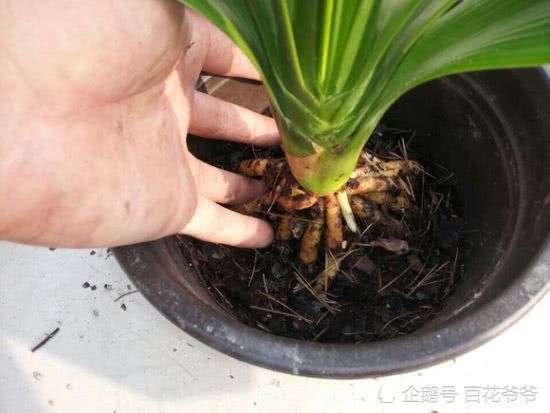This kind of underground tree root has to soak for seven days and seven nights before it can be eaten by the poor. Now it is very rare.

Now people's standard of living is very high, and their diet is becoming more and more refined. Many young people have never seen the food they have eaten before. In the past, food was very precious. When we were young, our parents often taught us not to waste a grain of grain. Even if a grain of rice fell on the ground, we had to pick it up and eat it. Because the older generation has experienced hard times and knows what it's like not to have enough to eat, it can't be wasted. I remember that the old people of my grandfather's generation said that at that time they were very poor and had no food to eat, so they would go to the mountains to dig a kind of tree root, which contained a lot of starch and could fill their stomach. But you can't eat it raw. You can't eat it until you soak in water for 7 days and 7 nights. What kind of root is this? Has anyone eaten it?
This kind of root looks like a sweet potato, but its aboveground part is not a rattan, but a kind of tree. This kind of tree is called "cassava", and in some places it is also called "kudzu" because its roots are very similar to those of kudzu. There are two kinds of kudzu, one is that the leaves are green, the other is purplish red. Farmers usually grow food with green leaves because it is less toxic. Yes, you read it right. Although it looks like sweet potato, it is poisonous. The toxin contained in Pueraria lobata is called "cyanate toxin". It is highly toxic to the human body and needs to be soaked in water or thoroughly cooked before consumption.
Usually, people will soak it in water for seven days and seven nights before eating it, and let the cyanate toxin dissolve in the water. Of course, the water must be changed along the way, and the changed water is full of this toxin. It must be poured out quickly to prevent children from accidental drinking poisoning. After blistering, 70% of the toxins of the kudzu are dissolved, and the rest of the toxins are not to be afraid, and can be eaten after being thoroughly cooked or steamed. In the past, there were two main ways to eat kudzu, one is to eat it directly after steaming, and the other is to cook porridge with it, because it has a high starch content, which makes the porridge look thick and can be eaten as rice.
Now people seldom eat tree kudzu, because there is basically no shortage of food and clothing, and farmers generally do not grow it. But in some poor and backward countries, Pueraria lobata is still their main food crop. In Africa, everyone knows that it is relatively poor and does not produce rice or wheat, and the poor there eat steamed kudzu almost every meal. According to statistics, 65% of the kudzu produced in the world is eaten as food, and the rest is used as industrial supplies, feed raw materials, and so on. In the world, Pueraria lobata is known as one of the "three major potatoes in the world" and occupies an indispensable position.
It is estimated that few people have seen Pueraria lobata now. It is said that it is very powdery and waxy after steaming, and it tastes as good as sweet potatoes. Has anyone ever eaten it?
- Prev

Grow flowers and rotten roots? The pelvic floor pad is loose and breathable, and the nutrients are full of new buds.
When summer comes, we have always stressed that the flowers and plants at home should be watered more frequently to prevent them from dying of dry and heat, but if this amount is not determined, it will easily cause stagnant water and rotten roots and yellow leaves, so most flower friends grow flowers.
- Next

The method of identifying the Grade of Orchid seedlings
Carry forward the national orchid culture and spread the knowledge of orchids as soon as they smell fragrance: orchids are not fragrant by people, and those with unturbid fragrance are the best. Second, look at the posture: the whole plant is symmetrical, and the coordination of flowers and leaves is preferred. Three look at color: pure color and light green is better, dark green.
Related
- Wuhan Hospital Iron Tree Blooming Result Was Instantly Frightened by the Gardener Master
- Which variety of camellia is the most fragrant and best? Which one do you like best?
- What is the small blue coat, the breeding methods and matters needing attention of the succulent plant
- Dormancy time and maintenance management of succulent plants during dormancy
- Minas succulent how to raise, Minas succulent plant pictures
- What are the varieties of winter succulent plants
- How to raise succulent plants in twelve rolls? let's take a look at some experience of breeding twelve rolls.
- Attention should be paid to water control for succulent plants during dormant period (winter and summer)
- Watering experience of twelve rolls of succulent plants
- Techniques for fertilizing succulent plants. An article will let you know how to fertilize succulent plants.

